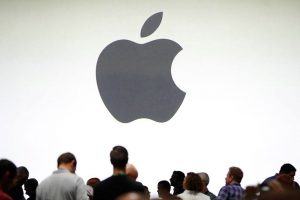
Apple to sell some watches without blood oxygen feature after US court ruling
WASHINGTON/SAN FRANCISCO — Apple said on Wednesday it would remove a blood oxygen monitoring feature from two flagship Apple Watch models in the US as the iPhone maker fights a legal battle over patents on the technology behind the feature.
The legal fight could take a year to resolve, and analysts had expected Apple would strike the feature, which is marketed for fitness uses, rather than pull devices from sale in one of its biggest markets.
The company said Apple Watch Series 9 and Ultra 2 models without the feature would go on sale on its website and stores starting at 6 a.m. Pacific Time (1400 GMT) on Thursday.
Apple shares closed 0.5% lower at $182.68 after the US Court of Appeals for the Federal Circuit ruled on Wednesday the company could no longer sell the models at the center of a the legal battle with medical technology company Masimo.
In December, Masimo secured a decision from the US International Trade Commission (ITC) to halt imports of the devices. Apple Watches comprise about a quarter of the global smartwatch market, according to Counterpoint Research.
In a statement, Joe Kiani, Masimo’s founder and chief executive, said the court ruling on Wednesday “affirms that even the largest and most powerful companies must respect the intellectual rights of American inventors and must deal with the consequences when they are caught infringing others’ patents.”
Apple said it “strongly disagreed” with the ITC decision and resulting orders and they should be should be reversed.
Existing Apple Watches are not affected by the orders, nor are devices sold outside the United States.
Series 9 and Ultra 2 models sold in the US from Thursday will still have an app icon for the blood oxygen features. But when users tap those icons, they will informed the features are unavailable.
APPLE’S OPTIONS
Ben Bajarin, chief executive of analyst firm Creative Strategies, had expected Apple to disable the blood oxygen features on its Series 9 and Ultra 2 Apple Watch models in the US rather than stop selling the wearable devices.
Apple does not break out Apple Watch or US sales figures specifically, but about 42% of its overall revenue came from North America last year.
While Apple Watch sales are far smaller than those of Apple’s flagship iPhone, the device anchors the company’s wearables sales segment, which accounted for $39.84 billion of Apple’s overall $383.29 billion in sales for fiscal 2023.
The ITC’s import ban on Series 9 and Ultra 2 Apple Watches briefly went into effect on Dec. 26. The Federal Circuit lifted the ban on Dec. 27 while it considered Apple’s request for a long-term pause, and Apple resumed sales of the smartwatches later that day.
Masimo has accused Apple of hiring away its employees and stealing its pulse oximetry technology to use in Apple Watches. The ITC barred imports and direct Apple sales of Apple Watches that read blood-oxygen levels following a Masimo complaint.
Apple stopped selling its latest Series 9 and Ultra 2 watches in the US before Christmas until the appeals court’s temporary pause. The devices remained available from other US retailers including Amazon.com, Best Buy, Costco and Walmart.
Apple asked the Washington-based Federal Circuit to keep the ban on hold for the duration of the appeals process, which is likely to take months. It argued that it was likely to win its appeal and that keeping the ban in effect would harm the company, its suppliers and the public.
The commission countered that Apple’s arguments “amount to little more” than a patent infringer “requesting permission to continue infringing.”
Apple has included a pulse oximeter feature in smartwatches since its Series 6 Apple Watch in 2020. It has countersued Masimo for patent infringement, calling Masimo’s legal actions a “maneuver to clear a path” for its own competing watch.
An Apple company report said its wearables, home and accessory business, which includes the Apple Watch, AirPods earbuds and other products, brought in $8.28 billion in revenue during the third quarter of 2023. — Reuters
